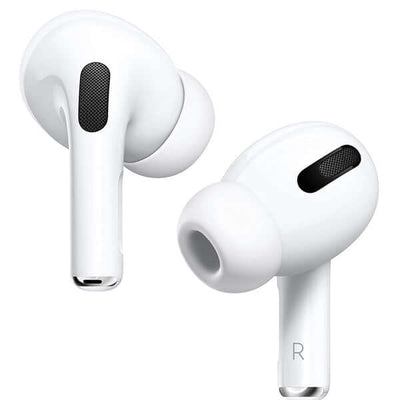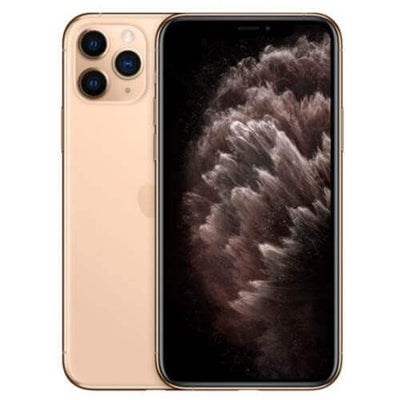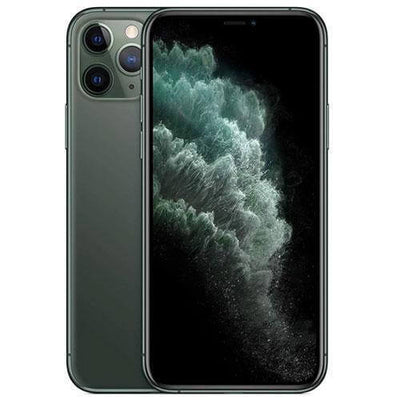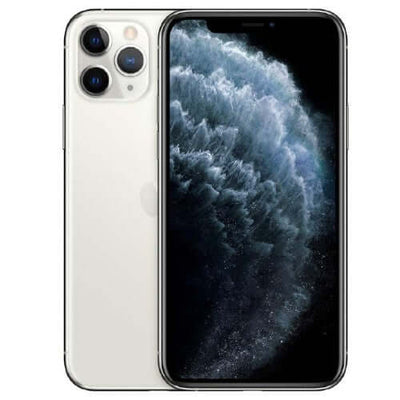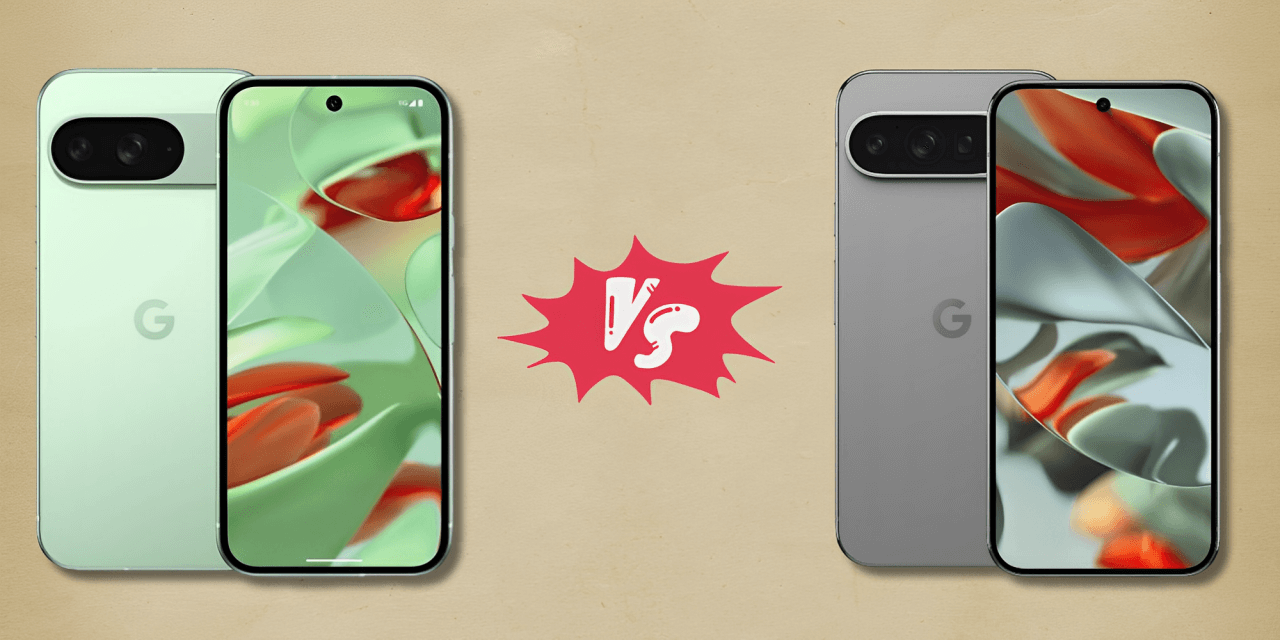Introduction: Navigating Google's Latest Flagship Duo
The smartphone market is a constantly evolving landscape, with new flagships vying for attention every year. Within this competitive arena, Google's Pixel line continues to carve its niche, renowned for its innovative software and computational photography. The release of the Google Pixel 9 and Google Pixel 9 Pro has sparked considerable interest, prompting comparisons and discussions across tech platforms. This article aims to cut through the noise and guide you through the key differences, ultimately helping you determine which of these Google flagships is the ideal choice for your needs and budget, particularly within the UAE market. We'll delve into the nuances of each model, exploring everything from design and display to the powerful Tensor G4 chip, cutting-edge AI features, and, of course, the camera systems where the Pixel truly shines.
Choosing the right smartphone can feel overwhelming, especially with the multitude of options available. This article aims to simplify the decision-making process for those considering Google's latest offerings: the Google Pixel 9 and Google Pixel 9 Pro. While both phones represent Google's commitment to innovation, understanding the subtle yet important differences between them is crucial.
The Aesthetic: Shared Design Language and Subtle Differences
Both the Pixel 9 and Pixel 9 Pro share a similar design language, with subtle variations in size and materials. The Pro model typically features a more premium build, often incorporating materials like Gorilla Glass Victus or even Gorilla Glass Victus 2. For example, the Pro might have a polished metal frame compared to the standard model's matte finish.
The Pixel 9 series retains the familiar Pixel aesthetic, characterized by clean lines and a distinctive camera bar. Both models emphasize build quality, offering a premium in-hand feel. The use of recycled aluminum contributes to both sustainability and a solid feel, while the camera bar’s integration becomes a signature design element, visually setting it apart from competitors. Both models share a core design philosophy but offer nuanced variations, such as different color options and accent materials. The Pro variant, for example, might offer exclusive colors and a textured finish on the power button for easier identification.
|
Feature |
Google Pixel 9 |
Google Pixel 9 Pro |
|
Display |
6.3-inch OLED, 120Hz |
6.3-inch LTPO OLED, 120Hz |
|
Resolution |
1080 x 2424 pixels |
1280 x 2856 pixels |
|
Peak Brightness |
Up to 2700 nits |
Up to 3000 nits |
|
Processor |
Google Tensor G4 |
Google Tensor G4 |
|
RAM |
12GB |
16GB |
|
Rear Camera |
50MP Wide + 48MP Ultrawide |
50MP Wide + 48MP Ultrawide + 48MP Periscope Telephoto (5x optical zoom) |
|
Front Camera |
10.5MP |
42MP |
|
Battery |
4700mAh |
4700mAh |
|
Wired Charging |
27W |
27W |
|
Wireless Charging |
15W |
21W |
|
Durability |
IP68 |
IP68 |
Display Technology: Size, Brightness, and Refresh Rate
The displays on both devices offer vibrant colors and high brightness. While both utilize high refresh rates, typically around 120Hz for smooth scrolling and animations, subtle differences may exist in color calibration or other display technologies. It's important to consider the screen resolution as well, keeping in mind that the most common mobile screen resolution in 2023 was 360x800. The Pro model might offer a higher resolution and peak brightness for improved outdoor visibility, catering to users who prioritize media consumption.
Durability: Gorilla Glass Victus and Beyond
Protection against scratches and drops is a key consideration for any smartphone purchase. Both the Pixel 9 and Pixel 9 Pro offer robust durability features, typically employing Gorilla Glass Victus or the even more resilient Gorilla Glass Victus 2 on the Pro model. Independent drop tests have shown Victus 2 surviving drops onto rough surfaces from up to two meters, offering significant peace of mind.
The Pixel 9 caters to those who prefer a more compact and manageable form factor. Its sleek design makes it comfortable to hold and use one-handed. Its reduced size and weight make it ideal for users who prioritize portability and ease of use, especially for single-hand operation.
Build Materials and In-Hand Feel
The Pixel 9 Pro typically utilizes premium materials, resulting in a refined in-hand feel. Its larger size might make it less suitable for one-handed use compared to the Pixel 9. The Pro model may incorporate a ceramic or frosted glass back, providing a distinct tactile experience and minimizing fingerprint smudges.
Tensor G4 Benchmarks vs. Real-World Performance
While benchmark scores can provide a general idea of processing power, real-world performance is ultimately what matters most. We'll explore how the Tensor G4 performs in everyday tasks, multitasking, and demanding applications. For example, comparing frame rates in popular mobile games like Genshin Impact can provide valuable insights beyond synthetic benchmarks.
Both the Pixel 9 and Pixel 9 Pro are powered by the Google Tensor G4 chip, a processor specifically designed to excel in AI tasks. The Pro model typically boasts more RAM, often 16GB compared to the Pixel 9's 12GB. This additional RAM allows for more applications to run in the background without impacting performance.
Tensor G4's Role in AI Features
The Tensor G4 is optimized for AI processing, allowing for seamless integration of features like Gemini, Magic Editor, and Circle to Search. These features leverage the chip's power to provide intelligent and personalized experiences. For example, Gemini can analyze your calendar and suggest optimal meeting times based on your availability and travel time.
While synthetic benchmarks provide a numerical representation of performance, the true test lies in real-world usage. How does the Tensor G4 handle everyday tasks, multitasking, and demanding applications? Real-world tests, such as exporting a 4K video, can offer a more practical understanding of the Tensor G4's capabilities.
AI Features: Gemini, Magic Editor, and More
The Pixel 9 series leverages the Tensor G4 to deliver a host of AI-powered features. Gemini enhances contextual understanding and summarization capabilities, while Magic Editor offers innovative photo editing tools. Magic Eraser, for instance, can remove unwanted objects from photos with impressive accuracy, simplifying photo editing for casual users.
While both models share many AI features, subtle differences may exist in performance or availability depending on RAM and other hardware factors. The additional RAM in the Pro model can enhance the performance of demanding AI tasks. The Pro's extra RAM might enable faster processing of complex AI tasks like video upscaling or generating creative content using Gemini.
Main Camera Performance
The main camera on both the Pixel 9 and Pixel 9 Pro offers exceptional image quality, thanks to Google's computational photography expertise. However, the Pro model often features additional camera hardware, like a telephoto lens, for enhanced versatility. DxOMark scores often highlight the Pixel’s camera prowess, reflecting its ability to capture stunning detail and dynamic range.
The Tensor G4’s dedicated AI cores facilitate smooth multitasking and gaming, allowing users to switch between apps and games without noticeable performance hiccups. Consider the scenario of playing a graphics-intensive game while simultaneously streaming music and maintaining a voice call - the Tensor G4 aims to handle such scenarios with ease.
Connectivity: Wi-Fi 7 and Future-Proofing
Both models are expected to support Wi-Fi 7, the latest wireless standard, providing faster speeds and improved network stability. This future-proofs your device, ensuring compatibility with evolving network technologies. Wi-Fi 7 offers theoretical speeds up to 4.8 Gbps, enabling seamless streaming of 8K content and faster file transfers.
The Pixel 9 Pro's camera system often includes a dedicated telephoto lens, enabling optical zoom capabilities not found on the standard Pixel 9. This is a key differentiator for photography enthusiasts. This telephoto lens allows for capturing distant subjects with greater clarity and detail, a feature often missing in the standard model.
Camera System: Where the Biggest Differences Lie
The camera system is often the most significant distinguishing factor between the Pixel 9 and Pixel 9 Pro. While both models excel in computational photography, the Pro typically offers additional hardware and features for a more versatile and powerful camera experience. As camera quality is a primary concern for 86% of Americans when buying a smartphone, this is a critical area of comparison. The Pro's superior zoom capabilities and potentially larger sensor size contribute to its overall photographic advantage.
The Core Camera Philosophy: Google's Computational Photography
Google's computational photography approach leverages software algorithms to enhance image quality. This approach is central to both the Pixel 9 and Pixel 9 Pro, ensuring stunning photos even in challenging lighting conditions. Features like HDR+ and Night Sight utilize computational photography to improve dynamic range and low-light performance, respectively.
Super Res Zoom and Digital Enhancement
The Pro model often benefits from more advanced image processing capabilities and potentially larger or higher-quality sensor technology, further enhancing its camera performance. Features like Super Res Zoom, Super Actua, and Video Boost contribute to its superior image and video quality. A larger sensor can capture more light, resulting in improved image quality, especially in low-light conditions, and offering a shallower depth of field for more professional-looking portraits.
Final Thoughts
Choosing between the Google Pixel 9 and Pixel 9 Pro ultimately depends on your individual needs and priorities. If a compact design, excellent camera performance, and a more accessible price point are your primary concerns, the Pixel 9 is an excellent choice. However, if you're a photography enthusiast craving the best zoom capabilities, require maximum RAM for demanding applications or intensive AI usage, and are willing to pay a premium for a larger display and potentially longer battery life, the Pixel 9 Pro is the clear winner. Modern flagships offer over 24 hours of battery life, making this a less differentiating factor than camera and AI capabilities. In the competitive UAE market, understanding the "google pixel 9 price" and "google pixel 9 pro price in uae" is essential.
Remember to factor in long-term value and software support when making your decision. While both phones offer a compelling blend of hardware and software, the Pixel 9 Pro, with its advanced camera system and powerful performance, edges out the Pixel 9 for those seeking a premium flagship experience. With the smartphone market's continued growth, both Pixel devices represent compelling options within a dynamic and ever-evolving landscape.
Frequently Asked Questions
1. What is the main camera difference between the two models?
The Pixel 9 Pro features a triple rear camera system that includes a telephoto lens with 5x optical zoom, which the standard Pixel 9 lacks.
2. Which phone has a better display?
The Pixel 9 Pro has a superior Super Actua LTPO OLED display with a higher resolution and brighter screen compared to the Pixel 9's Actua OLED display.
3. Do both phones have the same processor?
Yes, both the Google Pixel 9 and Pixel 9 Pro are powered by the same Tensor G4 chip.
4. Is there a difference in RAM and storage?
The Pixel 9 Pro offers more RAM (16GB vs. 12GB) and additional storage options, including a 1TB model, which are not available on the standard Pixel 9.
5. What about battery life and charging?
Both phones have comparable battery life, but the Pixel 9 Pro has a slightly larger battery capacity and faster wired charging.
